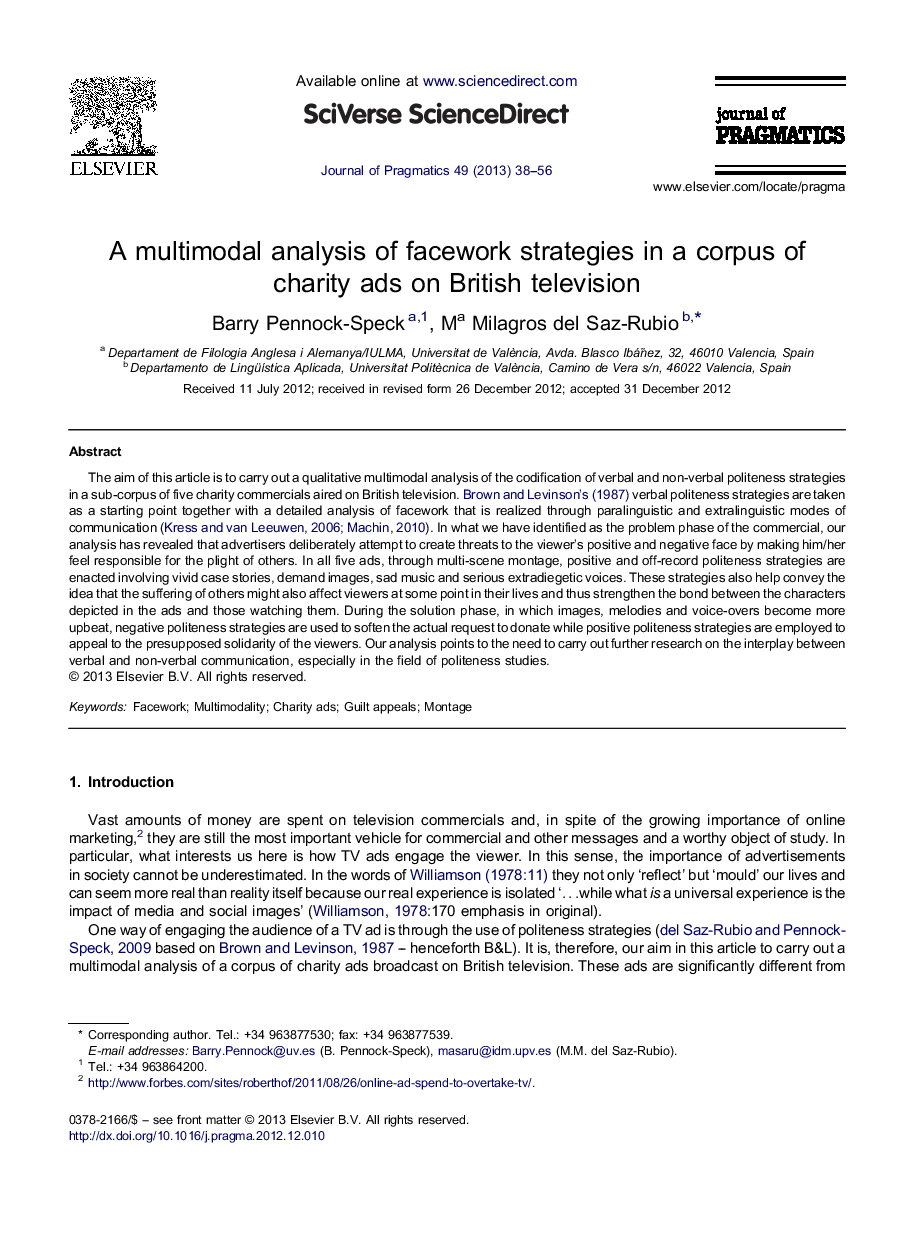| Article ID | Journal | Published Year | Pages | File Type |
|---|---|---|---|---|
| 932934 | Journal of Pragmatics | 2013 | 19 Pages |
The aim of this article is to carry out a qualitative multimodal analysis of the codification of verbal and non-verbal politeness strategies in a sub-corpus of five charity commercials aired on British television. Brown and Levinson's (1987) verbal politeness strategies are taken as a starting point together with a detailed analysis of facework that is realized through paralinguistic and extralinguistic modes of communication (Kress and van Leeuwen, 2006 and Machin, 2010). In what we have identified as the problem phase of the commercial, our analysis has revealed that advertisers deliberately attempt to create threats to the viewer's positive and negative face by making him/her feel responsible for the plight of others. In all five ads, through multi-scene montage, positive and off-record politeness strategies are enacted involving vivid case stories, demand images, sad music and serious extradiegetic voices. These strategies also help convey the idea that the suffering of others might also affect viewers at some point in their lives and thus strengthen the bond between the characters depicted in the ads and those watching them. During the solution phase, in which images, melodies and voice-overs become more upbeat, negative politeness strategies are used to soften the actual request to donate while positive politeness strategies are employed to appeal to the presupposed solidarity of the viewers. Our analysis points to the need to carry out further research on the interplay between verbal and non-verbal communication, especially in the field of politeness studies.
► We have carried out a multimodal analysis of verbal and non-verbal politeness. ► Our corpus is made up of charity ads broadcast on British television. ► Our findings reveal that charity ads are unique in their use of facework strategies. ► Positive and off-record politeness strategies are deployed during the problem phase. ► Negative politeness strategies are used in the solution phase.
